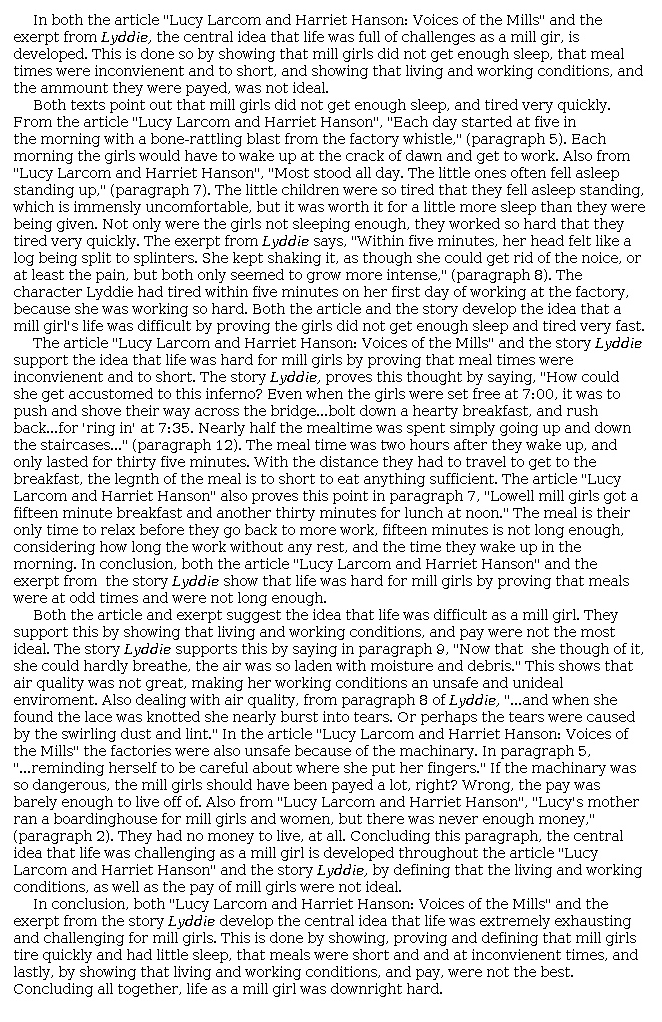2018 MCAS
Grade 7 English Language Arts
Question 15
Idea Development - Score Point 5
The essay fully and insightfully develops the central idea of the challenges the girls faced and identifies evidence in both passages. Explanations are clear and focused; for example, "both texts point out that mill girls did not get enough sleep, and tired very quickly" and "both the article and the story develop the idea that a mill girl's life was difficult." Beyond just the functional difficulties associated with being a mill girl, the essay describes a mill girl's pay as "barely enough to live off of." While there is some formulaic repetition in the opening and closing paragraphs, there is an overall sense of organization and awareness of the task.
Standard English Conventions - Score Point 3
The length and complexity of the essay provide sufficient opportunity to demonstrate consistent control both of a variety of sentence structures and Standard English conventions in grammar, usage, and mechanics.

[
5 Points | 5 Points |
4 Points |
3 Points |
2 Points |
1 Point |
0 Points]
